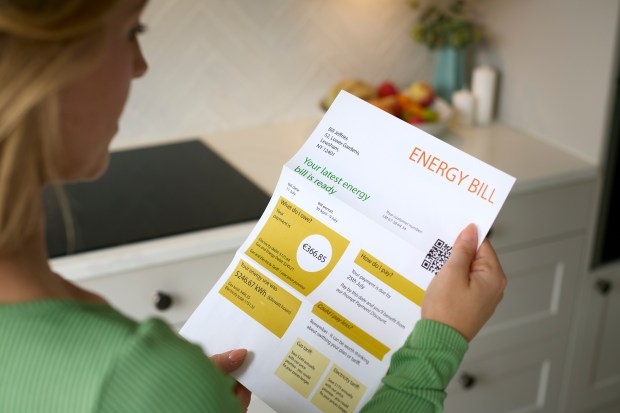MORE than 418,000 households face huge energy bill hikes as their fixed deals, secured in Spring 2024 when energy prices were lower, are set to expire.
If affected customers do not switch to a new fixed rate deal, they will be automatically transferred to their supplier’s standard variable tariff (SVT).
These tariffs are typically more expensive and track the Ofgem price cap, which recently increased by 6.4% – its third consecutive rise – on April 1.
Households on their supplier’s SVT saw their annual bill rise from £1,738 to £1,849 per year.
However, many households are likely to incur costs exceeding this headline figure, which is based on the assumption that a typical household consumes 2,700 kWh of electricity and 11,500 kWh of gas annually.
This is because the energy price cap does not limit the total amount a customer pays for their energy.
Instead, it sets a maximum charge per kilowatt-hour (kWh) of gas and electricity, alongside the daily standing charges.
So if you use more than a typical households expect to pay more.
Last spring, energy prices were significantly lower, prompting millions of UK households to lock in fixed-price energy deals.
These deals offered protection against potential price cap increases by Ofgem.
However, 73 fixed-rate deals issued between March and May 2024 are now nearing their end, with some set to expire within weeks — and others within hours.
For instance, the Outfox the Market Fix’d Dual Mar24 v1.0 tariff, which offered a typical annual cost of £1,535, is set to expire today.
This means that customers who choose not to switch to the best available fixed deal on the market and instead revert to the price cap will face an annual bill increase of £313.
Meanwhile, E.ON Next’s Fixed 12m v10 tariff, which offered a typical annual cost of £1,665, is set to expire Tuesday, April 15.
Customers who choose not to switch to the best available fixed deal on the market and instead revert to the price cap will face an annual bill increase of £184.
Why should I sign up for a new fix now?
Fixed deals work to protect customers from bill hikes if Ofgem were to increase the price cap in the future.
Those who lock into a fixed energy deal are charged the same gas and electricity rates throughout the contract’s term.
There is a risk that if energy prices fall, you could end up paying more.
However, analysts at energy consultancy Cornwall Insight have advised that households should not anticipate a significant drop in prices this year.
How can I check future price cap predictions?
EDF Energy has launches a brand new Ofgem price cap prediction tool on its website.
The energy company updates the tool with new information about changes to the cap on energy prices every Tuesday.
It also includes advice on how this affects your energy tariff choices.
You can find out more by visiting www.edfenergy.com/gas-and-electricity/price-cap-predictions.
Currently, there are dozens of fixed energy deals available that offer better value than suppliers’ SVTs, and it takes only five minutes to begin saving.
Outfox the Market is currently offering the cheapest deal on the open market.
Its Fix’d Duel Apr25 12M v2.0 tariff costs a typical household £1,549 a year.
This figure is based on a typical household that uses an average of 11,500kWh of gas and 2,700kWh of electricity every year.
This means it is £300 cheaper than Ofgem’s April price cap.
It comes with a £25 exit fee per fuel or £50 if you lock in with a dual fuel tariff.
Outfox is also offering the cheapest 18 month deal with its 18-Month Fix’d Duel Apr25 v4.0, costing a typical households £1,559 a year.
This means it is £290 cheaper than Ofgem’s April price cap.
It comes with a £50 exit fee per fuel or £100 if you lock in with a dual fuel tariff.
Meanwhile, E.ON Next’s Fixed 14m v5 offer costs £1,635 a year – £214 less than Ofgem’s January price cap and comes with no exit fees.
Other firms may offer offer prices which beat those in the table below.
But, these often cost customers more by forcing them to take out an extra service, like boiler cover, which isn’t always necessary.
So, make sure you always read the small print.
How can I find the cheapest fixed deals?
To find the best fixed energy deals, start by visiting price comparison websites, which aggregate various offers from different energy suppliers.
The best sites include Uswitch.com and MoneySavingExpert’s Cheap Energy Club.
Enter your postcode and current energy usage details to receive a list of available deals tailored to your needs – it’ll take you less than five minutes.
You’ll then be able to compare the rates, contract lengths, and any additional features or benefits offered by each deal.
Next, visit the websites of individual energy suppliers to check if they have exclusive deals that are not listed on comparison sites.
Sometimes, suppliers offer special promotions or discounts directly to customers.
Compare these offers with those on the comparison websites to ensure you get the best possible rate.
Finally, consider customer service reviews and the overall reputation of the suppliers.
Once you have identified the best deal, follow the instructions to switch your energy provider.
What are the alternatives?
Customers unwilling to commit to long-term fixed energy deals may want to consider flexible tariffs.
Kara Gammell, personal finance expert at comparison site Money Supermarket Group, says: “These will almost always be at or below the price cap.”
For example, E.ON Next‘s Pledge variable tariff offers a fixed discount of around three per cent on the price cap rates for 12 months.
It will save the average household around £50 a year but comes with a £50 exit fee if you switch before the year ends.
The deal is available to both new and existing customers.
British Gas‘s Price Cap Guarantee and EDF Energy’s Ensure Tracker work in a similar way and also offer a £50 discount off the price cap’s charges for 12 months.
For a bigger reward but at a higher risk, Octopus Energy offers two variable tariffs which track wholesale gas and electricity costs.
Customers using the Octopus Tracker experience daily price fluctuations, but electricity rates have largely stayed below the price cap over the past 12 months.
For instance, over the last 30 days, households in southern England on the Octopus Tracker paid a maximum of 28.5p per kWh for electricity.
However, gas prices have generally been higher, with customers paying an average of 7.07p per kWh for gas.
The Agile Octopus tariff works similarly to the Octopus Tracker, but the main difference is that the former’s prices change every half hour.
Those wishing to switch to any of these tracker tariffs must have a smart meter.
What energy bill help is available?

There’s a number of different ways to get help paying your energy bills if you’re struggling to get by.
If you fall into debt, you can always approach your supplier to see if they can put you on a repayment plan before putting you on a prepayment meter.
This involves paying off what you owe in instalments over a set period.
If your supplier offers you a repayment plan you don’t think you can afford, speak to them again to see if you can negotiate a better deal.
Several energy firms have schemes available to customers struggling to cover their bills.
But eligibility criteria vary depending on the supplier and the amount you can get depends on your financial circumstances.
For example, British Gas or Scottish Gas customers struggling to pay their energy bills can get grants worth up to £2,000.
British Gas also offers help via its British Gas Energy Trust and Individuals Family Fund.
You don’t need to be a British Gas customer to apply for the second fund.
EDF, E.ON, Octopus Energy and Scottish Power all offer grants to struggling customers too.
Thousands of vulnerable households are missing out on extra help and protections by not signing up to the Priority Services Register (PSR).
The service helps support vulnerable households, such as those who are elderly or ill.
Some of the perks include being given advance warning of blackouts, free gas safety checks and extra support if you’re struggling.
Get in touch with your energy firm to see if you can apply.







